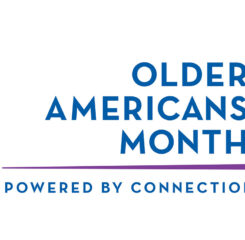Interview with Dr. Michael Mina – May 2, 2022
Michael Mina is an Epidemiologist, Immunologist and Physician, who is now the Chief Science Officer of EMed, a telehealth company. Through most of the pandemic, Dr. Mina was a professor in the Center for Communicable Disease Dynamics at the Harvard School of Public Health and an associate medical director and faculty member at Brigham and Women’s Hospital, Harvard Medical School. He joined the May 2, 2022 LeadingAge Coronavirus Update call and answered questions from Ruth Katz and from callers. A summary of the interview follows.
Q: You have been part of building a strategic roadmap for the next phase of the pandemic. As we enter the “Next Normal” of this pandemic, what brought together this group to write this Roadmap and would you tell us a bit about it?
A: The Roadmap was developed under the leadership of Zeke Emanuel to pull in the appropriate expertise for the topic at hand. We were very careful to assure that each chapter was written by people within their specific field of expertise. We are in this pandemic and we can’t wish it away and we needed to think about how best to manage the next phases. I’m not thrilled with the title – Getting to and Sustaining the Next Normal – but it is what we came up with. We can’t get to the next normal until we get the worst of the current situation under control. The virus will be with us for a long time – maybe forever. But we have an opportunity to put in place the tools to manage this virus.
Q: With reduced masking and fewer restrictions this spring, it often feels like people are going back to the old normal. Are we moving too quickly?
A: Yes, I think we are moving too quickly. This was anticipated – it is not where I want us to be but this is what happened one year ago and two years ago. We have to be careful not to assume we are out of the woods. We are seeing cases escalate again. It is okay to have a little respite, but we need to be ready for a new big wave in the South and another large wave in the North in the fall. If that doesn’t happen, we can celebrate, but right now we should be considering this a temporary reprieve.
Q: Why did you mention the South specifically?
A: From our experience with COVID and other viruses we see more spread with indoor activity. In the South, people will be retreating into air conditioning so surges there happen earlier than in regions that are less hot where people will be outdoors more in the summer. In the autumn, people in more northern climates will be going indoors for heating. People stay healthier when they are outdoors.
Q: Chapter 4 of the Roadmap on Indoor Air Quality has many direct applications to our members, their workforce and the people they serve. What standards to you advocate that the EPA and OSHA adopt?
A: A basic tenet of the Roadmap group was to identify what can be done over the next 12-24 months to address the pandemic. We did not make specific long-term policy recommendations. We wanted people to recognize that indoor air is a major medium for transmission. There are simple solutions that can be implemented such as filtering air, opening windows, and using fans. These small things make a big difference. Individuals can work on this in their homes or businesses.
Q: Would you consider urging states and localities to include healthcare providers on their list of organizations to receive American Rescue Plan dollars to upgrade ventilation?
A: Yes, there are recommendations to empower various agencies, the EPA for example, to help providers increase air quality. Many of these agencies have been disempowered over the past decades – so we want agencies to feel empowered to be able to do their job most effectively for the health of the public.
Q: The Infectious Disease Dashboard and Data Infrastructure components are very intriguing and certainly needed. How do you see these massive projects being funded and organized? How would that data be gathered and used for older adults? Our members are very short-staffed and providing data seems like a huge effort.
A: We do no good data gathering at the national level and we are not able to monitor data in real time. Data is what drives good public health decision making. We should be throwing money at nursing homes and other organizations to help them gather the data we need. We haven’t created the resources to make good data happen. That is in part because we don’t have a center charged with coordinating all of that. We recommended a central public health data platform. For efficiency’s sake we need to create something beyond the CDC (may get merged in later) that identifies what data we need to collect and figure out how to get the data. We should be building the data infrastructure. We should lean on technology – we have failed to use the internet in the ways in which we could have during the pandemic.
Early on I set up a large data and testing program. We discovered that the nursing staff just didn’t have the capacity to do reporting as they were so pressed with care and other tasks. We have not done a good job of figuring out how to take the data reporting burden from them and provide other types of support for reporting. How could we make use of technology to improve reporting?
Q: There was just a front-page article in the Washington Post reporting that older people are once again dying of COVID. There is a separate and distinct “Schools and Childcare” section of this Roadmap. Aging services providers and the people they serve were among the hardest hit by this pandemic – did you consider a chapter on older adults and vulnerable people?
A: We kind of did – we wrote the whole Roadmap thinking about vulnerable and aging populations, which is what led to us having a separate chapter on children. In retrospect we should have had a specific chapter that delved into those older adults who are most vulnerable. The report doesn’t do a good job of indicating how the recommendations would play out specifically in congregate older adult settings. Frankly, it was a heroic effort to get consensus on the chapters we did include. I do think something specific on older adults and other vulnerable people would warrant an addendum
Q: What are the important messages for providers who work with older adults?
A: We need better guidance on how we treat older individuals or others who have co-morbidities. Paxlovid is a good resource, but because it interacts with so many other medications, physicians are reluctant to prescribe it. Those are real concerns that need to be addressed. We have to create detailed guidance for physicians and provide an educational system that can be rapidly disseminated. My grandfather is in a nursing home and the medical director did not really know how to prescribe Paxlovid for people with multiple complex conditions.
Another piece is how do we give providers and payers the tools to weigh the costs and benefits of particular decisions. Leaving physicians who are not experts in this field to make these decisions without support is scary for the individual and they may make the wrong risk calculation. There are also long-term implications for how we train physicians.
Q: Are we in a better place now if a new pandemic should arise?
A: I wish I could give you a positive answer, but a part of me thinks that we are in a worse place. If something were to happen today, I fear that denial, resistance and pandemic fatigue would be a problem. We would not likely be able to mobilize the level of resources we did in this pandemic. But for aging services, there are some basic lessons learned – such as about cohorting, infection control, and PPE, and those will not be forgotten quickly. This may be where we see the greatest change – the people on the ground who now have pandemic experience. The providers on the ground still care – we continue to see heroic efforts, and I think that heroes will rise up when they are needed.
Q: Please talk a little bit about the current state of testing. Will we be able to keep low cost tests and widespread availability of tests?
A: While rapid antigen tests sometimes get a bad rap, they are helpful tests because they give quick results. They are good at identifying when someone is infectious. The manufacturing infrastructure has developed capacity and we are in a good spot to have access to the tests. Now – how do we make best use of them? We need to think strategically about the cadence of testing. To go a step further, many people now have access to the tests, so how do we link them to early treatment? If we can do that then we can turn the tides on the pandemic.
We discussed test to treat a great deal in the Roadmap. The administration is linking test to treat in facilities which is not helpful for many people. We should tie it to telemedicine, so we don’t have as much spread. People can test where they are and then have the medications delivered to them.

Most Recommended
April 22, 2024
CMS Finalizes Nursing Home Minimum Staffing Standards
April 21, 2024
 Older Americans Month 2024: Suggested Schedule
Older Americans Month 2024: Suggested Schedule
April 24, 2024
 Salary Threshold for White Collar Overtime Exemptions Raised
Salary Threshold for White Collar Overtime Exemptions Raised
April 12, 2024
Improving Medicare Advantage
Recently Added
April 30, 2024



